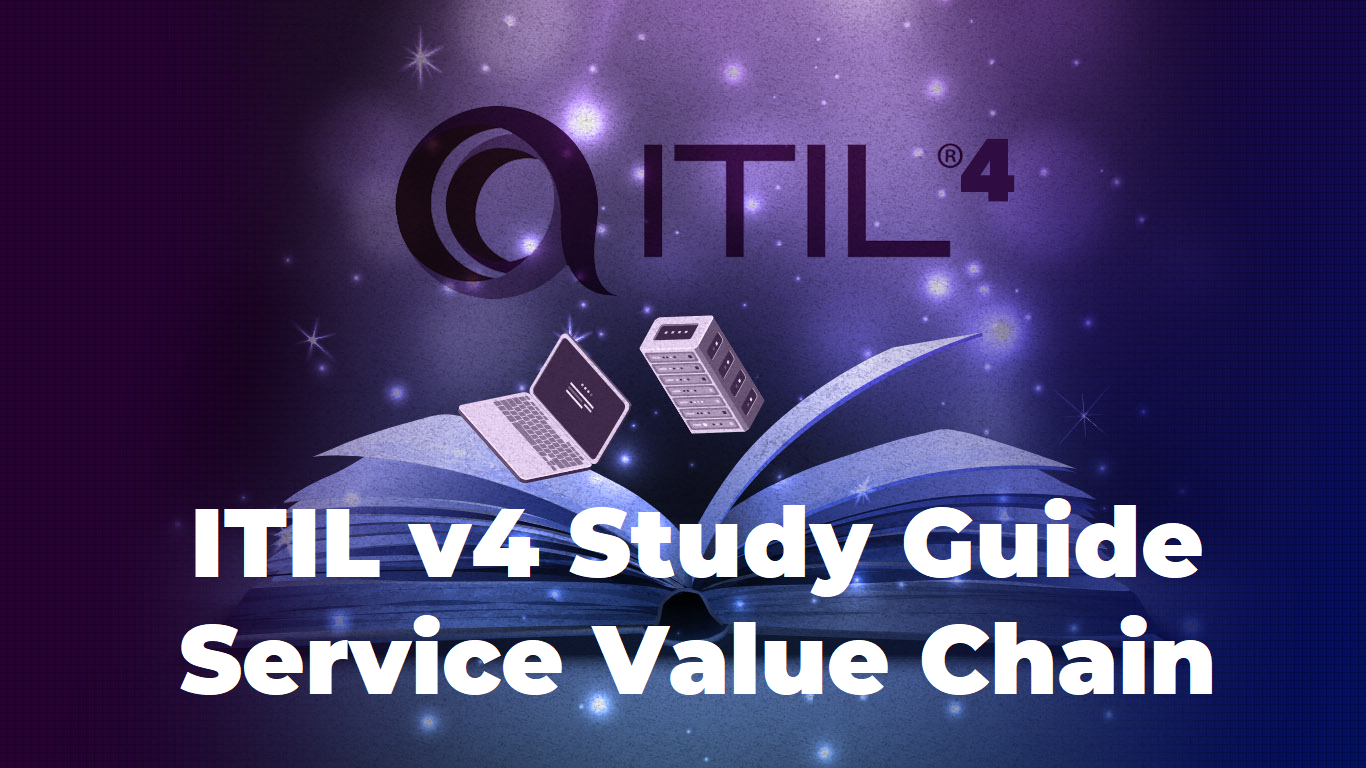The most recent version of ITIL, ITIL 4 introduced a lot of new concepts. One of these new concepts is the Service Value System, Service Value Chain and Value Stream. The Service Value Chain (SVC) is the core component of the ITIL® Service Value System (SVS). It is an operating model that is used to represent how all the components and activities of an organization work together to facilitate value creation. It utilizes six key ‘Activities’ that help ITIL practitioners to conceptualize, create, review, and improve high-quality services that are fully suited to client and stakeholder requirements.
The six activities in the Service Value Chain represent the steps which may be taken in the creation of value. Keep in mind that the activities are not linear. Not all activities will be utilized for every service, and each service may have different orders and/or combinations of these activities.
Plan – The purpose of the plan service value chain activity is to make sure that all stakeholders and people involved have a shared understanding of the vision. This will focus on the current status and improvement direction for all four dimensions and all products and services across the organization.
Improve – The Improve service value chain activity focuses on the continual improvement of products, services and practices across all value chain activities and the four dimensions of service management.
Engage – The Engage value chain activity is the most important activity as this is where you listen to your customer and have a good understanding of their needs. This is where you provide transparency, and with continual engagement you will foster good relationships with all stakeholders. They will also take stakeholder and client requirements and turn them into tangible design points, which will be used in the fourth Activity.
Design & transition – The Design and Transition value chain activity is where you aim to align your products and services with your client’s expectations when it comes to design, quality, features, costs and time-to-market. Requirements are also translated into specifications that can be used in the Obtain/ Build Activity. Finally, Design and Transition delivers new products and services for the sixth Activity, Deliver and Support.
Obtain/build – This Activity ensures service components meet required specifications, including being available whenever and wherever necessary. It effectively turns requirements into service components, which can be used in both the Design and Transition and Deliver and Support Activities.
Deliver & support – The Deliver and Support activity delivers services and products to the customer, ensuring that such delivery meets agreed specifications and the stakeholders’ expectations.
Benefits to using the Service Value Stream –
The IT-related benefits of using the ITIL service value stream for value mapping and value chain analysis are part of the larger benefit set that comes with ITIL use:
- Meeting the business need for “better, faster, cheaper” operations and outcomes for competitive advantage.
- Optimizing IT service delivery and support capabilities and their outcomes.
- Enabling enterprise-wide digital transformation.
Furthermore, the available benefits include:
- A focus on value creation or co-creation (and the ability to demonstrate IT’s worth)
- Standardization and consistency, benefitting from proven best practice
- Better meeting rising customer and employee expectations and demands
- Increased speed and efficiency
- Reduced costs (for competitive advantage)
- Improved control and governance
- A platform for continual improvement
The service value chain in ITIL 4 is essentially an operating model that lists the six key activities necessary to create value with a product or service – plan, engage, design and transition, obtain/build, deliver and support, and improve. The important thing to know here is that the Service Value Chain is the operating model across which Service Value Streams flow from Demand/Opportunity to Value. You can think of the Service Value Chain as the railway network, and Service Value Streams as the trains that run on that network. It’s also worth noting that the model can indeed serve as a workflow, but also be used simply as a high-level reminder of a sound thought process to ensure value chains are properly managed.

